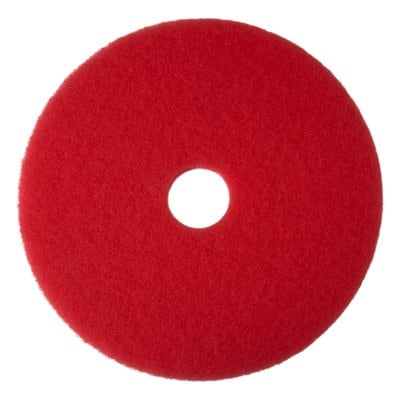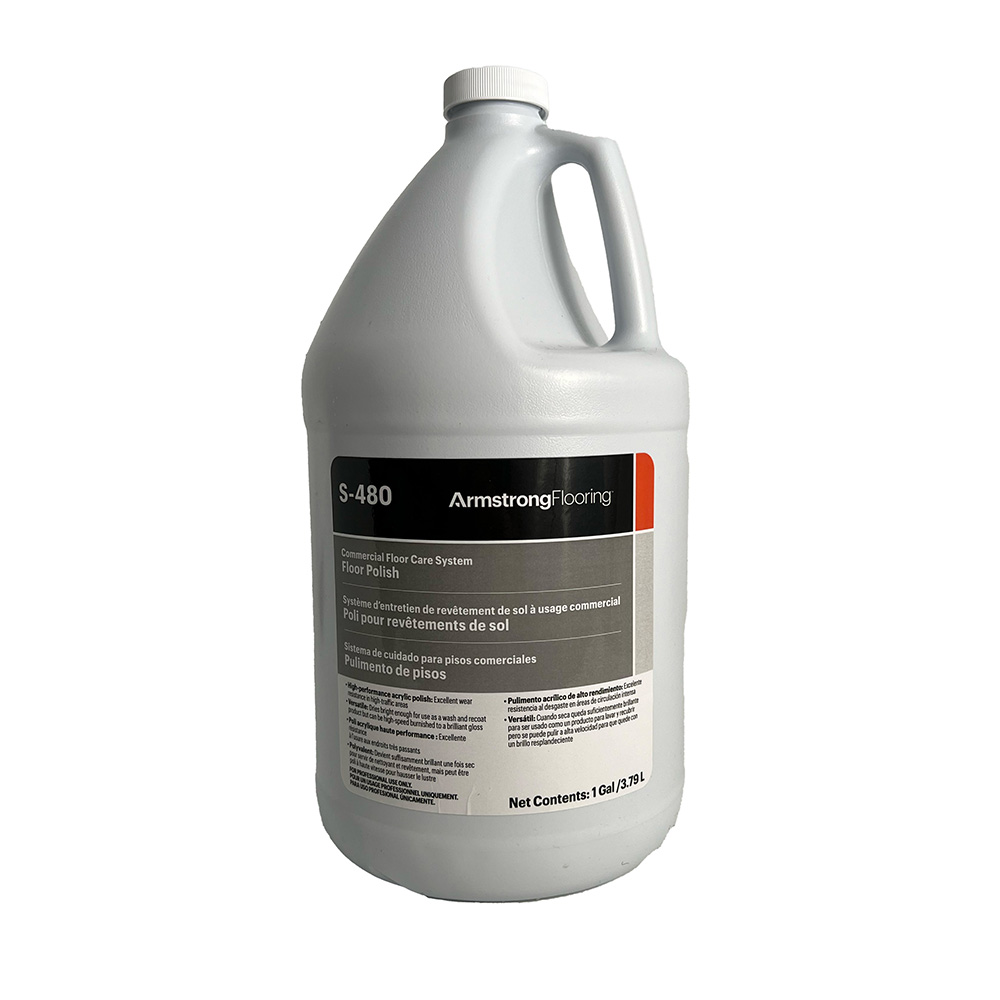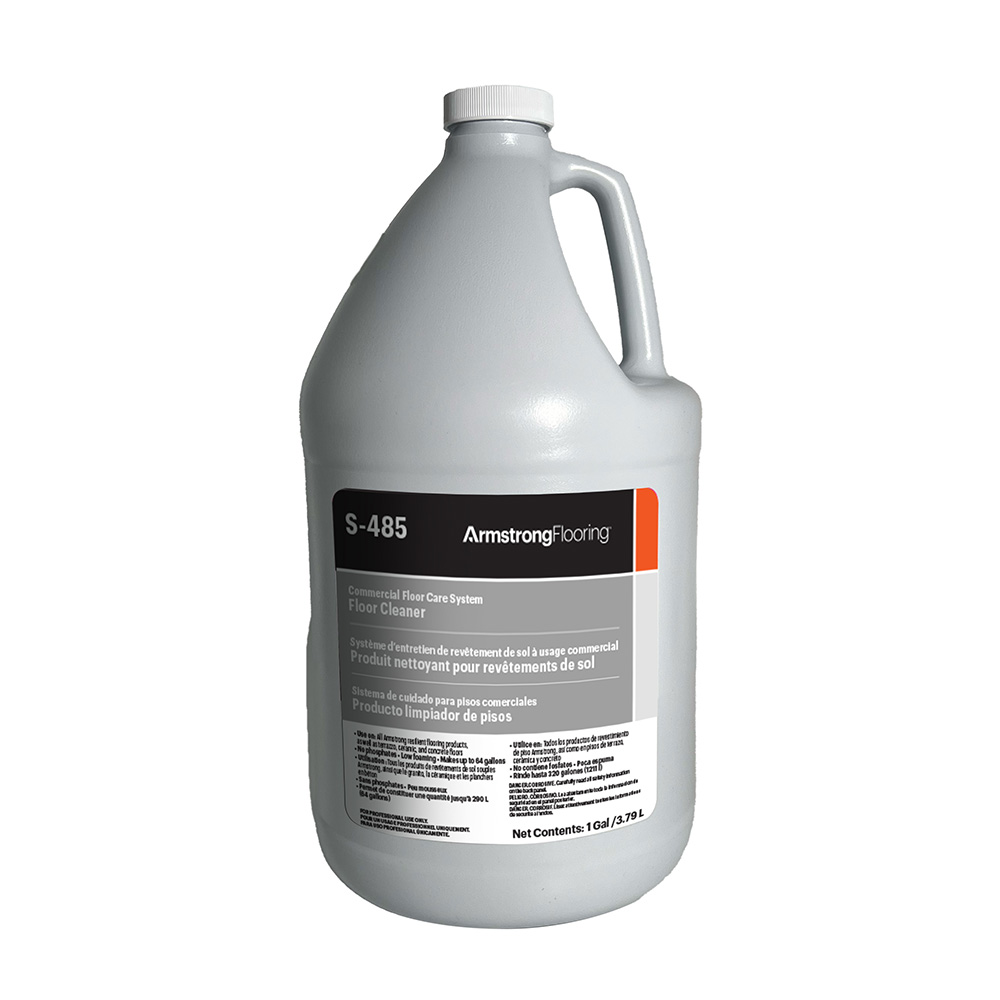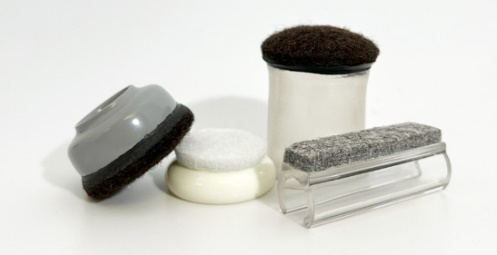
Following a regular and well-planned maintenance program will ensure a beautiful floor and increase its service life.
Click here for more insight into creating a Flooring Maintenance Plan for Your Facility.
Helpful Tips
- Always use proper safety signage while working, especially during wet maintenance.
- Use walk-off mats at every entrance to help control grit and soil; clean walk-off mats regularly. We recommend mats without latex or rubber backing since these backings can cause permanent discoloration.
- Protect the floor with plywood or Kraft paper during construction and while moving equipment and furniture.
- Select proper non-staining furniture rests and casters; the contact area should be smooth, flat, and firmly on the floor at all times.
- After removing loose dirt and debris, use a damp mop and a properly diluted cleaner for daily maintenance. Do not use an excessive amount of liquid.
- When using disinfectants, always follow manufacturer’s instructions for use to avoid slippery conditions and possible discoloration.
- A scrubbing brush may be used in place of a pad to remove dirt and residue.
- Protect your floor by avoiding the use of brown and black pads, or stiff-bristled, highly abrasive brushes.
- On heat welded seams, apply 1-2 thin, even coat(s) of S-762 Weld Rod Coating Pen; periodic reapplication may improve results.
Initial Maintenance
Preparation
- Newly installed flooring should not be exposed to rolling load traffic for at least 72 hours after installation to allow the adhesive to dry.
- Do not wet wash, machine scrub, or strip the floor for at least five days after installation. Excess moisture can interfere with the adhesive and/or seam treatments.
- When performing wet maintenance, always use proper signage and prohibit traffic until the floor is completely dry.
- Remove any adhesive residue with a clean, white cloth dampened with denatured alcohol.
Using Disinfectant/Germicidal Cleaners
 In applications where germicidal chemicals are routinely used, the floor must be scrubbed with a properly diluted cleaner, like S-485 Commercial Floor Cleaner, before the first application of disinfectant.
In applications where germicidal chemicals are routinely used, the floor must be scrubbed with a properly diluted cleaner, like S-485 Commercial Floor Cleaner, before the first application of disinfectant.- Use a single disk swing machine (300 rpm or less) with a 3M® blue scrubbing pad or equivalent brush or pad.
- Rinse the floor with fresh, clean water and allow the floor to dry.
- For homogeneous sheet with Diamond 10® Technology, please note: If polish does not bond and wet out or if germicidal chemicals do not wet out, the floor must be thoroughly scrubbed with a properly diluted sodium hydroxide-containing floor stripper such as Spartan Chemical Corporation’s Square One®, using a rotary machine (300 rpm or less) equipped with a 3M blue pad scrubbing pad or equivalent brush or pad. Strippers should have a formulated sodium hydroxide (NaOH) concentration of 1% by weight or greater. Dilution rates should not exceed 1:4. NOTE: Subsequent stripping of previously applied polish does not require the use of sodium hydroxide-containing strippers.
Sweep & Damp Mop in Areas with Light Soiling
- Sweep, dust mop or vacuum the floor to remove loose dust, dirt, and debris.
- Damp mop the floor with a properly diluted cleaner, like S-485 Commercial Floor Cleaner, on a regular or daily basis.
Machine Scrub for Heavy Soiling and Corrective Cleaning

- When necessary, after sweeping, dust mopping or vacuuming, scrub the floor using a rotary machine or auto scrubber (300 rpm or less) with a properly diluted cleaner
- Use a 3M red pad, or equivalent, for a light scrub
- Use a 3M blue pad, or equivalent, for a deep scrub
- Thoroughly scrub the floor, passing slowly in each direction
- The use of scrubbing brushes is recommended to remove dirt and residue
- Rinse the floor with fresh, clean water and allow the floor to dry.
- On heat welded seams, apply 1-2 thin, even coat(s) of S-762 Weld Rod Coating Pen; periodic reapplication may improve results.
Daily, Regular & Periodic Maintenance (No Polish)
Sweep & Damp Mop in Areas with Light Soiling
- Sweep, dust mop or vacuum the floor to remove loose dust, dirt, and debris.
- Damp mop the floor with a properly diluted cleaner, like S-485 Commercial Floor Cleaner, on a regular or daily basis.
Machine Scrub for Heavy Soiling and Corrective Cleaning

- When necessary, after sweeping, dust mopping or vacuuming, scrub the floor using a rotary machine or auto scrubber (300 rpm or less) with a properly diluted cleaner
- Use a 3M® red pad, or equivalent pad or brush, for a light scrub
- Use a 3M blue pad, or equivalent pad or brush, for a deep scrub
- Thoroughly scrub the floor, passing slowly in each direction
- The use of scrubbing brushes is recommended to remove dirt and residue
- Rinse the floor with fresh, clean water and allow the floor to dry.
- On heat welded seams, apply a thin, even coat of S-762 Weld Rod Coating Pen; periodic reapplication may be needed.
Polish Optional Maintenance
Polish is not required for Armstrong Flooring LVT or Sheet, however it will not negatively impact the performance of the floor. For facilities that choose to incorporate polish as part of their maintenance programs please follow the steps below.
Initial Maintenance

- Sweep, dust mop or vacuum the floor to remove loose dust, dirt, and debris.
- Damp mop the floor with a properly diluted cleaner, like S-485 Commercial Floor Cleaner.
- Remove any adhesive residue with a clean, white cloth dampened with denatured alcohol.
- Thoroughly scrub with a neutral floor cleaner and a 3M blue scrub pad or equivalent pad or brush. This will activate the surface to enable polish wet out and adhesion. Make multiple passes over the floor with a scrubber.
- Apply 3 to 5 coats of high-quality floor polish, like S-480 Commercial Floor Polish.
- In areas where the flooring will be exposed to heavy traffic and/or staining agents, we recommend applying 1 or 2 coats of a stain resistant sealer prior to the application of polish.
Sweep & Damp Mop in Areas with Light Soiling
- Sweep, dust mop or vacuum the floor to remove loose dust, dirt, and debris.
- Damp mop the floor with a properly diluted cleaner, like S-485 Commercial Floor Cleaner on a regular or daily
Machine Scrub for Heavy Soiling and Corrective Cleaning

- When necessary, after sweeping, dust mopping or vacuuming, scrub the floor using a rotary machine or auto scrubber (300 rpm or less) with a properly diluted cleaner
- Use a 3M red pad, or equivalent, for a light scrub
- Use a 3M blue pad, or equivalent, for a deep scrub
- Thoroughly scrub the floor, passing slowly in each direction
- The use of scrubbing brushes is recommended to remove dirt and residue
- Rinse the floor with fresh, clean water and allow the floor to dry.
- If needed, additional coats of floor polish may be applied. If there is sufficient base of polish remaining (3 to 5 coats),buff, spray buff or burnish to restore gloss.
Restorative Maintenance – Stripping Existing Floor Polish
- Mix stripping solution to the appropriate dilution, depending on floor finish buildup.
- Cordon off areas to be stripped and apply liberal amounts of solution uniformly on floor with mop.
- Let stripping solution soak for the appropriate amount of time recommended by the stripper manufacturer.
- Keep areas to be stripped wet. Rewet if necessary.
- Machine scrub the floor (300 rpm or less), passing slowly in each direction, with a 3M blue pad or equivalent to break up the polish film. Do not allow stripping solution to dry on the floor.
- Remove dirty stripping solution with a wet vacuum or mop.
- Rinse the floor with fresh, clean water and allow the floor to dry.
- Apply 3 to 5 coats of high-quality floor polish, like S-480 Commercial Floor Polish.
- In areas where the flooring will be exposed to heavy traffic and/or staining agents, we recommend applying 1 or 2 coats of a stain resistant sealer prior to the application of polish.
Equipment, Accessories & Floor Protection
We recommend using the following accessories and equipment as part of a regular and well-planned maintenance program to ensure a beautiful floor and increase its service life.
• Wet mops (microfiber, cotton, synthetic blend)
• Dry mops (microfiber, rayon, polyester, acrylic)
• Polish applicators (optional)
 Use a 3M® 5100 red pad or equivalent brush or pad for a light scrub |  Use a 3M 5300 blue pad or equivalent brush or pad for a deep scrub |
 S-480 Commercial Floor Polish S-480 Commercial Floor Polish |  S-485 Commercial Floor Cleaner S-485 Commercial Floor Cleaner |
 S-762 Weld Road Coating Pen S-762 Weld Road Coating Pen |
Guidelines for Floor Protection Devices
- The contact area should be smooth, slightly rounded and large enough to distribute the load evenly without damaging the floor.
- Floor contact devices should be manufactured from non-staining materials.
- Felt glides are recommended on smooth, hard surface. They must be kept clean and properly maintained.
- Nylon glides are recommended on heavily embossed or textured surfaces.
- When using rolling casters, we recommend double wheel options. To avoid damage under the casters, use a non-staining chair mat.
- Furniture, appliances, and equipment should be leveled so that all flooring protection devices rest fully and firmly on the floor.

